Thingiverse
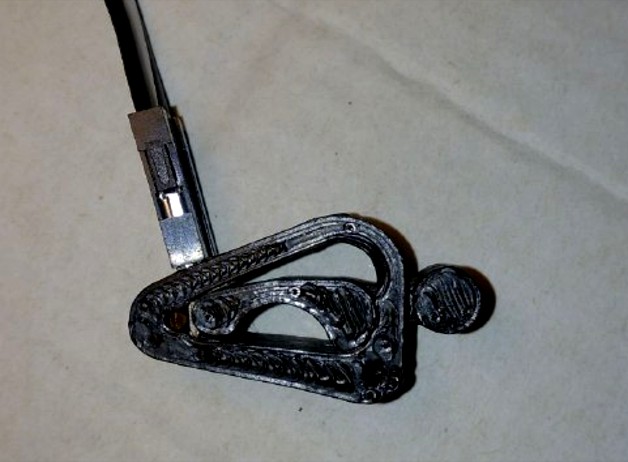
Printable Wago-style Terminal Block (30V 9A) by Harvie
by Thingiverse
Last crawled date: 3 years ago
This wire connector can connect up to 3 wires together in similar way to wago blocks.
3d printed mechanism with toggle lever allows to create pressure which pushes wires against small piece of slightly thicker "bus wire".
WARNING: This will burn your house down unless you fully understand implications of the design and used materials. Provided 30V/9A rating denotes absolute maximum rather than reccomended operation conditions. Do not use for high power stuff. This design is meant as proof-of-concept and might require improvements to fit it for particular use case. No warranty is provided.
There are two pieces, which can be 3d printed as whole assembly without supports. Can be printed under 10 minutes on any reasonable FDM printer. (I've used Průša Mini with 0.4mm nozzle)
These are reccomended sizes of wiring:
0.5mm diameter (AWG24) = may be scavenged from ethernet cable.
0.6mm diameter (AWG22) is also possible
1.0mm diameter (AWG18) have been tested, but is bit harder to handle
I was even able to fit Dupont male connector inside! (see the photo)
1.3mm diameter (AWG16) for use as bus bar permanently installed in the connector. has to be solid core (obviously).
It is strongly advised against mixing several wire thicknesses in single connector as thick wires might prevent the thin ones to be properly cinched. I guess model can be improved in future to allow individual wires to be cinched by separate springs.
Please note that closing the connector with higher wire diameter will cause it to loose some of the springiness. Especialy after using 1mm wire the connector lever does not hold in closed position without any wire inserted. But it still keeps the ability to hold small (0.5mm wires very well).
Currently all wires can go all the way through the connector. This is mostly for experimental purposes. The holes should be blind if intended for serious use.
This also allows the bus wire to go through several blocks to connect them together.
If you use slightly longer bus wire, you can bend it and use it to solder whole thing to PCB!!! Model contains second hole for bus wire, which is not connected anywhere, but can be used to provide better mount to the PCB. Consider your mind blown!
If you need to scale this model to accomodate bigger wires, i think it makes sense to scale it with respect to bus wire. Because that is only tightly fitted dimension. Other wires dimensions are self-aligning.
I have printed this from PLA and "springiness" of whole thing is tuned to work best when printed from PLA. But PLA is far from being safe material for use in high power electricity connectors.
Ever heard about "Deans T" connector? These are popular connectors rated for 60A. While they use metal spring, they still completely rely on plastic to provide enough pressure to hold the spring and everything together. They are made from fire-retardant PolyAmide (=Nylon). This material is also available in form of 3d printer filament. So that might be interesting material for further experiments.
3d printed mechanism with toggle lever allows to create pressure which pushes wires against small piece of slightly thicker "bus wire".
WARNING: This will burn your house down unless you fully understand implications of the design and used materials. Provided 30V/9A rating denotes absolute maximum rather than reccomended operation conditions. Do not use for high power stuff. This design is meant as proof-of-concept and might require improvements to fit it for particular use case. No warranty is provided.
There are two pieces, which can be 3d printed as whole assembly without supports. Can be printed under 10 minutes on any reasonable FDM printer. (I've used Průša Mini with 0.4mm nozzle)
These are reccomended sizes of wiring:
0.5mm diameter (AWG24) = may be scavenged from ethernet cable.
0.6mm diameter (AWG22) is also possible
1.0mm diameter (AWG18) have been tested, but is bit harder to handle
I was even able to fit Dupont male connector inside! (see the photo)
1.3mm diameter (AWG16) for use as bus bar permanently installed in the connector. has to be solid core (obviously).
It is strongly advised against mixing several wire thicknesses in single connector as thick wires might prevent the thin ones to be properly cinched. I guess model can be improved in future to allow individual wires to be cinched by separate springs.
Please note that closing the connector with higher wire diameter will cause it to loose some of the springiness. Especialy after using 1mm wire the connector lever does not hold in closed position without any wire inserted. But it still keeps the ability to hold small (0.5mm wires very well).
Currently all wires can go all the way through the connector. This is mostly for experimental purposes. The holes should be blind if intended for serious use.
This also allows the bus wire to go through several blocks to connect them together.
If you use slightly longer bus wire, you can bend it and use it to solder whole thing to PCB!!! Model contains second hole for bus wire, which is not connected anywhere, but can be used to provide better mount to the PCB. Consider your mind blown!
If you need to scale this model to accomodate bigger wires, i think it makes sense to scale it with respect to bus wire. Because that is only tightly fitted dimension. Other wires dimensions are self-aligning.
I have printed this from PLA and "springiness" of whole thing is tuned to work best when printed from PLA. But PLA is far from being safe material for use in high power electricity connectors.
Ever heard about "Deans T" connector? These are popular connectors rated for 60A. While they use metal spring, they still completely rely on plastic to provide enough pressure to hold the spring and everything together. They are made from fire-retardant PolyAmide (=Nylon). This material is also available in form of 3d printer filament. So that might be interesting material for further experiments.
Similar models
thingiverse
free

"Vertical" Spool Holder Base and Spring centering ring by 3DPrinTek
...ng which allows a bit of variation on the diameter 50-60mm f pla is used - abs might be a bit more springy (or maybe even nylon).
thingiverse
free

Wago Power Bus Bracket - V13 by cheer4ftc
...n also use two of these back-to-back with intermediate wires bridging between the two sets to create an 8-input distribution bus.
thingiverse
free

Wago Holder 2 by Overnau
...from the holder.
hope it will help to solve coller and hotend connecton problem without soldering.
have a good and stable prints.
thingiverse
free

QFH Antenna with ring connectors
... elements).
print the spacer out and use it to connect all the pieces for a nicer looking (and easier to put together) antenna.
thingiverse
free

mendel spring design for soft PLA springs by BonsaiBrain
...his on www.ifeelbeta.de
greetings
bonsaibrain
edit: openscad source file uploaded - it's no professional code, but parametric
grabcad
free

Springy Spring with variable diameter
...springy spring with variable diameter
grabcad
springy spring with variable diameter
thingiverse
free

Springy Corner Bracket by Verohomie
...quot; od x .053" music wire x .500" long, 3.6 coils, closed and ground with a plain finish. the load is 12.4 lbs each.
thingiverse
free

Bike pump mount, customizable, zip-tieable
...recommend printing in abs for flexibility (for pla, you might try increasing the pump opening angle and/or decreasing the cinch).
thingiverse
free

DIN Rail Screw Held Terminal Block by Atomist
...nc connect connection connector connectors electronics screw terminal_block terminal_strip wire wires wire_holder wire_management
thingiverse
free

Tube connector - customizable by Skdzzz
...lay flat" in you slicer to avoid uneeded supports in the base and check for overhangs as it depends on the connection angle.
Harvie
thingiverse
free

Harvy Blindplug by Mats_larsson
...harvy blindplug by mats_larsson
thingiverse
here is a blindplug for harvy hydroponic system.
thingiverse
free

Harvy hydroponic lid by PrinterKitty
...een harvested and others remain in it.
i printed with leaf part down. use 100% infill to prevent sun from getting into container.
thingiverse
free

Říp (Mythical Czech Mountain, 455m) by Harvie
...říp (mythical czech mountain, 455m) by harvie
thingiverse
https://en.wikipedia.org/wiki/%c5%98%c3%adp_mountain
thingiverse
free

Sněžka (Largest Czech Mountain, 1603 m) by Harvie
...sněžka (largest czech mountain, 1603 m) by harvie
thingiverse
https://en.wikipedia.org/wiki/sn%c4%9b%c5%beka
thingiverse
free

Kayak paddle blade (3d scan) by Harvie
...ut new one from foam and fiberglass it.
photogrammetric scan using mve, meshlab cleanup, blender sculpting to smooth the details.
thingiverse
free

Cat Molly-Guard for NESPRESSO Krups Essenza Mini by Harvie
...these:https://www.thingiverse.com/thing:4720919https://www.thingiverse.com/thing:2772783https://www.thingiverse.com/thing:4075639
thingiverse
free

RepJack A1: simple fully printable wire connector by Harvie
...pecify any number of terminals (currently you have to print two separate connectors if you want to make more than one connection)
thingiverse
free

Čestmír Mudruňka - Žena na slunci (Statue 3D Scan) by Harvie
...ished here.
there are two 3d files. stl containing just geometry for 3d printing and ply containing geometry + color for viewing.
thingiverse
free

Hydroponic stand and adapter 44mm holes/110mm pipe by Viperninja74
...pipe by viperninja74
thingiverse
for use with homemade hydroponics with 110mm pipe ,and 44mm holes . designed for harvy baskets.
thingiverse
free

RepJack B2: Electric Connector (12V 2A) by Harvie
...n axialy, so they don't get pulled apart, when connector is under stress.
make it visualy more appealing and easier to handle
30V
thingiverse
free

Power supply 0-30V to 0-30V 10A CC and CV by Skulbl4k4
...or. schéma in target 3001 (save of projet, gerber and gcode for the small pcb).
i used inventor 2016
bad english sry. i am swiss
thingiverse
free

ESP8266 5V 10A DC 7-30V Wireless WIFI Network Relay Module by mariop73
...wireless wifi network relay module by mariop73
thingiverse
case for a esp8266 5v 10a dc 7-30v wireless wifi network relay module
thingiverse
free

2,5V-30V Digital Voltage Meter Case by m4RT1n
...eter 2.5v - 30v
bangood - 3d printer & supplies
have fun...
if you like it please follow me or/and give it a like :) , thx
thingiverse
free

Adjustable Supply 0.5-30V + Cooling Fan by H3rmit
...f-1p2t-3-pin-2-position-slide-switch-spdt-50v-0-5a-sc/163077556537?sspagename=strk%3amebidx%3ait&_trksid=p2057872.m2749.l2649
thingiverse
free

DIY Lab Bench Power Supply 30V 5A
... https://aliexpi.com/oo70
insert nut: https://aliexpi.com/hkfm
7 din 912 m3x6
8 din 7991 m4x8
thingiverse
free

High voltage battery from CR2025 Batteries (for more than 30V) by glassy
...lcome to tip me:
https://www.paypal.com/cgi-bin/webscr?cmd=_s-xclick&hosted_button_id=u25v96gznvl3n&source=url
thank you!
thingiverse
free

Electronic Load 9.99A 60W 1-30V Case by HAMMER_T
...806
40mm fan grill by choise. i use hot glue go secure it.
edit: the source files are uploaded. the design is made with inventor.
thingiverse
free

Stryfe voltmeter bracket/wire guide for 30V voltmeters by Piranowski
...ttps://www.youtube.com/watch?v=f6riulipsxq
cheapest voltmeters i found on aliexpress that fit the bracket: https://bit.ly/2ito74a
thingiverse
free

0.5-30V DC Bench Power Supply by wisestone
... black filaments, with 0.2mm layer height and 15% infill on a prusa i3 mk3s printer.
i hope you can find this print useful, too.
thingiverse
free

DIY Cheap Lab Power Supply 5A/30V by Area51
... for assembly.
printing time for case is approx. 3½h.
updates2021.01.29: added model with ventilation slots for high power units.
9A
3ddd
free

ITALUX LISA MX09080-9A
...italux lisa mx09080-9a
3ddd
italux
светильник подвесной, фирмы italux . модель - lisa. номер по каталогу - mx09080-9a
humster3d
$75
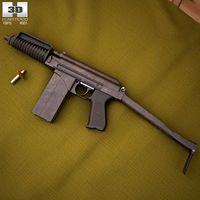
3D model of 9A-91
...ster3d
buy a detailed 3d model of 9a-91 in various file formats. all our 3d models were created maximally close to the original.
3ddd
free

Бра - mathieu lustrerie 995036-9A
...бра - mathieu lustrerie 995036-9a
3ddd
mathieu lustrerie
бра - mathieu lustrerie 995036-9a
моделил по фото, не 100% сходство
turbosquid
$9

Classic Bed `141209`9A
... available on turbo squid, the world's leading provider of digital 3d models for visualization, films, television, and games.
turbosquid
free

Magazine (9a-91 VSK-94)
... available on turbo squid, the world's leading provider of digital 3d models for visualization, films, television, and games.
3d_export
$50

Carbine assault rifle 9a-91 3D Model
...91 carbine kbp
carbine assault rifle 9a-91 3d model download .c4d .max .obj .fbx .ma .lwo .3ds .3dm .stl ronin3ds 103000 3dexport
3ddd
$1
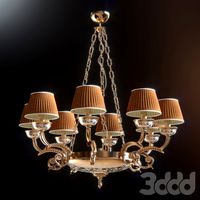
sarri hydria 835852/9a
...lys: 216,746
verts: 220,554
краткое описание коллекции:
возможно заказать в другом размере: 835852/6a - h 98 cm, d 92 cm, 6 ламп
3ddd
$1
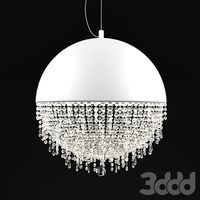
Люстра Illuminati Aquarius MD1100331-9A
...ti aquarius md1100331-9a
3ddd
illuminati
размеры: диаметр - 53 см, высота - 60 см. количество ламп - 9х25 вт. материалы - corona.
3d_export
$65

MQ-9 Reaper US Border Security
...mq-9 reaper us border security 3dexport the turboprop-powered, multi-mission mq-9a remotely piloted aircraft (rpa) was developed with ga-asi funding...
3ddd
$1

Люстра ILLUMINATI Corso
...corso 3ddd illuminati , corso итальянская люстра illuminati (corso md103204-9a. описание - 9*g9, d:500,...
Wago
thingiverse
free

WAGO Holder by cosmowave
...e
this holder is for wago-terminals.
available with 88mm, 106mm and 115mm gap.
you can glue your wago-terminals on this holder.
thingiverse
free

WAGO-in-box by Ghiotto
...wago-in-box by ghiotto
thingiverse
wago 5x2 + 3x3 stand inside electric box
thingiverse
free
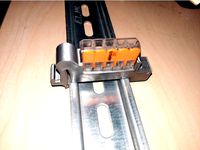
Wago Hutschienenadapter by Son_Goku_2
...wago hutschienenadapter by son_goku_2
thingiverse
wago hutschienenadapter
keine fliegenden klemmen mehr im verteiler
thingiverse
free

Wago Base (knockoff wago) by l1mb0
...r the producthttps://www.ebay.com/itm/10-pcs-2-3-wege-klemme-wagoklemmen-verbindungsklemme-hebel-klemmen-dosenklemme/193765655994
thingiverse
free

DPS600PB Wago mount by Miko99
...dps600pb wago mount by miko99
thingiverse
2x wago 221 412
2x wago 221 413
thingiverse
free

Wago terminal 221 holder / Wago Klemmenhalter für 221 by Boschlike
...alter für 221 by boschlike
thingiverse
wago terminal holder for 3 pin 221 terminal / wago klemmenhalter für 3-polige 221 klemme
thingiverse
free

WAGO 221 Hutschienenmontage by 13HN1904
...o 221 hutschienenmontage by 13hn1904
thingiverse
wago hutschienenmontage auch zu finden auf.:https://wago-creators.com/design/95
thingiverse
free

Wago Holder by Overnau
...s wago holder to the wires.
hope it will help to solve coller connecton problem without soldering.
have a good and stable prints.
thingiverse
free

Wago modular accessory / Wago accessoire modulaire by boxplyer
...e.
epaisseur de couche 0.3
epaisseur de coque 0.6
taux de remplissage 25
température d'impression 220c°
type de support aucun
thingiverse
free

Wago Holder 2 by Overnau
...from the holder.
hope it will help to solve coller and hotend connecton problem without soldering.
have a good and stable prints.
Terminal
archibase_planet
free

Terminal
...planet
terminal payment terminal
terminal internet terminal point n140815 - 3d model (*.gsm+*.3ds) for interior 3d visualization.
archibase_planet
free

Terminal
...nal
archibase planet
payment terminal terminal equipment
terminal n190111 - 3d model (*.gsm+*.3ds) for interior 3d visualization.
3d_export
$5

terminator
...terminator
3dexport
terminator. for 3d print.
archibase_planet
free

Terminal
...terminal
archibase planet
terminal
terminal 3 - 3d model (*.gsm+*.3ds) for interior 3d visualization.
archibase_planet
free

Terminal
...terminal
archibase planet
terminal
terminal 1 - 3d model (*.gsm+*.3ds) for interior 3d visualization.
archibase_planet
free

Terminal
...terminal
archibase planet
terminal
terminal 2 - 3d model (*.gsm+*.3ds) for interior 3d visualization.
archibase_planet
free

Terminal
...terminal
archibase planet
terminal
terminal 4 - 3d model (*.gsm+*.3ds) for interior 3d visualization.
archibase_planet
free

Terminal
...terminal
archibase planet
terminal equipment
terminal n181210 - 3d model (*.gsm+*.3ds) for interior 3d visualization.
archibase_planet
free
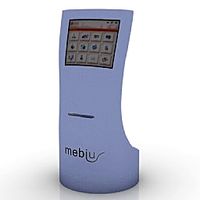
Terminal
...terminal
archibase planet
terminal equipment
terminal n070211 - 3d model (*.gsm+*.3ds) for interior 3d visualization.
archibase_planet
free
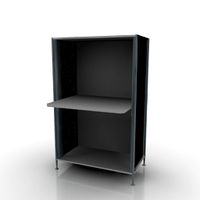
Terminal
...terminal
archibase planet
terminal rack post
fp terminal wh - 3d model (*.gsm+*.3ds) for interior 3d visualization.
Block
archibase_planet
free

Blocks
...blocks
archibase planet
blocks bricks toy
toy blocks - 3d model (*.gsm+*.3ds) for interior 3d visualization.
3d_export
$5

Block
...block
3dexport
3d_export
$10
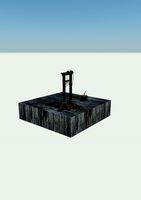
The guillotine and the block
...the guillotine and the block
3dexport
the guillotine and the block autocad 2013
3d_ocean
$8

Concrete Blocks
... blocks, barriers or cover for characters during a fire fight. each one has its own diffuse map, specular and normal map in tg...
archibase_planet
free
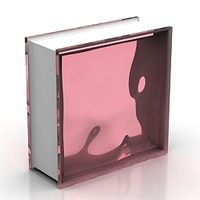
Glass block
...glass block
archibase planet
glass block brick
glass block n211009 - 3d model (*.gsm+*.3ds) for interior 3d visualization.
3d_export
$99

city block
...city block
3dexport
city block 3d model. include max, obj and fbx files.
3d_ocean
$3
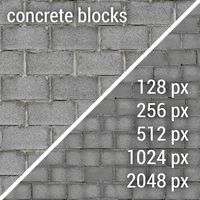
Concrete Blocks Textures
...res
3docean
block blocks concrete seamless wall walls
a couple of seamless textures with two differents sizes of concrete blocks.
3d_export
$5
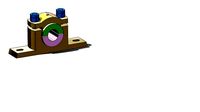
plummer block
...plummer block
3dexport
this is an 3d model of plummer block assembly where seven parts are required to assemble this.
design_connected
$16

Block 2
...block 2
designconnected
henry pilcher block 2 computer generated 3d model. designed by pilcher, henry.
3d_export
$7
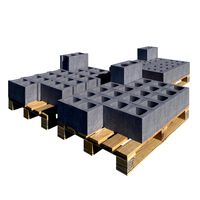
concrete blocks on pallets
...concrete blocks on pallets
3dexport
concrete blocks on pallets, 3 types of blocks. there are all the necessary textures.
Style
3ddd
$1

style
...style
3ddd
манекен , одежда
style
3ddd
$1
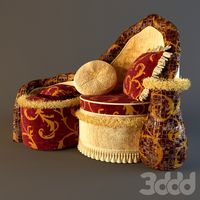
BM Style
...bm style
3ddd
bm style
кресло bm style с материалами и тестурами
3d_export
$5

style handle
...style handle
3dexport
style handle
3d_export
$6
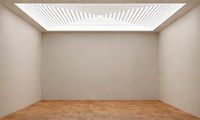
new style
...new style
3dexport
new style room
turbosquid
$1
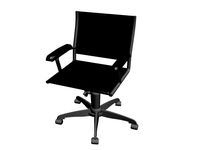
style
... available on turbo squid, the world's leading provider of digital 3d models for visualization, films, television, and games.
3d_export
$5

Roman style
...roman style
3dexport
roman style architecture house
3ddd
$1

Ceppi Style
...ceppi style
3ddd
ceppi style
качественная модель классического стола ceppi style с текстурами и материалами v-ray
3ddd
$1
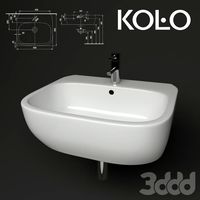
Kolo Style
...kolo style
3ddd
kolo
умывальник kolo style, арт. l21950
3ddd
$1
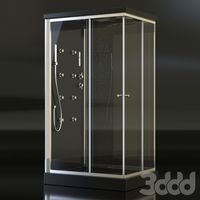
Banos Style
... style
производитель banos
модель style
в архиве присутствует дополнительная версия с материалами для corona
3ddd
$1
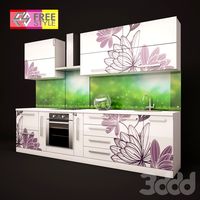
Кухня Free-style
...кухня free-style
3ddd
free-style
кухня free-style
Printable
turbosquid
$5

printable giraffe
...uid
royalty free 3d model printable giraffe for download as on turbosquid: 3d models for games, architecture, videos. (1504825)
turbosquid
$49

Longhorn Printable
...
royalty free 3d model longhorn printable for download as stl on turbosquid: 3d models for games, architecture, videos. (1712930)
3d_export
$2
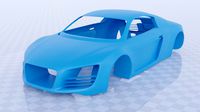
printable audi car
...printable audi car
3dexport
printable audi car
turbosquid
$40
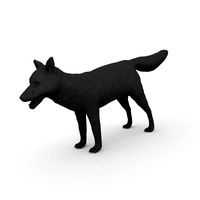
Fox printable
...lty free 3d model fox printable for download as blend and stl on turbosquid: 3d models for games, architecture, videos. (1507558)
turbosquid
$23

Printable Statue
...ty free 3d model printable statue for download as obj and stl on turbosquid: 3d models for games, architecture, videos. (1415137)
turbosquid
$3

Ear Printable
...yalty free 3d model ear printable for download as obj and stl on turbosquid: 3d models for games, architecture, videos. (1671689)
turbosquid
$1

heart printable
...y free 3d model heart printable for download as stl and sldpr on turbosquid: 3d models for games, architecture, videos. (1209566)
turbosquid
$1
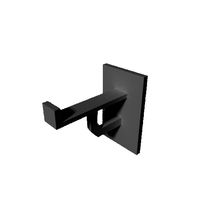
Printable Hook
...
royalty free 3d model 3d printable hook for download as stl on turbosquid: 3d models for games, architecture, videos. (1413683)
turbosquid
$30

Printable support
... model 3d printable support for download as max, 3ds, and stl on turbosquid: 3d models for games, architecture, videos. (1689342)
turbosquid
$24

Printable Dolphin
...el printable dolphin for download as , dae, fbx, obj, and stl on turbosquid: 3d models for games, architecture, videos. (1602353)
